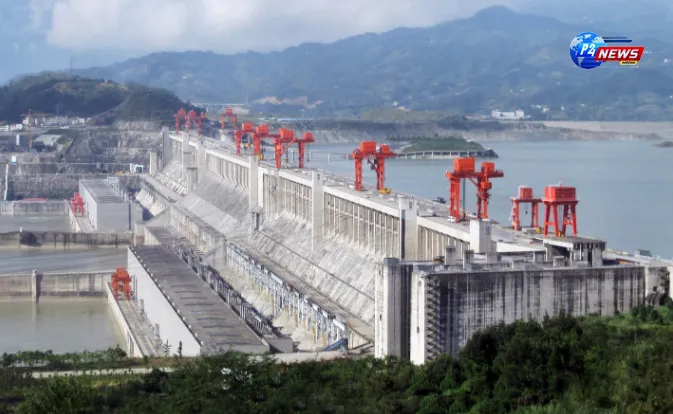The dam enables China to regulate water supplies strategically, with the capability of releasing significant volumes to inundate neighboring regions in times of conflict, enhancing its leverage in territorial disputes.
The dam enables China to regulate water supplies strategically, with the capability of releasing significant volumes to inundate neighboring regions in times of conflict, enhancing its leverage in territorial disputes.
China is embarking on an ambitious project to construct what is poised to become the world's largest hydropower dam, strategically positioned on the eastern edge of the Tibetan plateau. This significant undertaking, which will harness the waters of the Yarlung Zangbo River, is projected to generate an impressive 300 billion kilowatt-hours of electricity each year, raising considerable concerns regarding its implications for neighboring India.
Situated at a point where the Yarlung Zangbo River makes a pronounced turn towards Arunachal Pradesh in India, this dam is a centerpiece of China's development strategy as outlined in its 14th Five-Year Plan. This initiative aims to transcend the scale of previous mega infrastructure projects, including the well-known Three Gorges Dam. The financial outlay for this colossal project is estimated at around USD 137 billion, positioning it as one of the largest infrastructure endeavors in global history.
However, the lack of clarity surrounding the project has sparked anxiety within New Delhi. The concerns primarily revolve around Beijing's opacity regarding the dam's construction, which amplifies fears about its potential repercussions on the water supply in India. Given the dam's strategic placement, there are worries that it may lead to significant alterations in water availability, affecting millions on the Indian side of the border.
The implications are multifaceted. One major concern is the possibility of extreme weather events such as flash floods that could occur as a result of the dam’s operations. Conversely, there is apprehension that the dam could cause water shortages downstream, critically impacting India's water resources, especially in regions that are already vulnerable to scarcity. This situation raises alarms about India's increasing dependence on China for water, which could inadvertently give Beijing leverage over its neighbor.
As the upper riparian state, China's management of this dam has direct implications for the water flow to India, potentially diminishing the volume of water available to the latter. This situation augments India's existing concerns and highlights the delicate nature of water relations between the two nations. The geopolitical ramifications of such a project are profound, with potential for escalating tensions between India and China, igniting what some experts have termed "water wars." Genevieve Donnellon-May, a geopolitical strategist, has commented on these heightened risks in relation to the project, emphasizing the broader regional consequences of water management disputes.
Moreover, the dam's ability to manipulate water flows could enable China to release substantial quantities of water during periods of conflict, potentially inundating border areas. This scenario raises alarms about the security dynamics in the region, as water control could become a tool of geopolitical strategy.
In response to these developments, India is taking proactive steps by initiating the construction of its own dam on the Brahmaputra River in Arunachal Pradesh. Recent diplomatic engagements have highlighted India’s intent to address these concerns head-on, with discussions about data sharing taking place between National Security Advisor Ajit Doval and Chinese Foreign Minister Wang Yi during their Special Representatives meeting. Such endeavors indicate that India is well aware of the stakes involved and is committed to securing its water interests in light of the looming challenges presented by the Tibetan dam project.
Ultimately, the construction of the dam by China on the Tibetan plateau represents not only a monumental engineering achievement but also a pivotal moment that will shape the future water dynamics between India and China. As both nations navigate this intricate landscape, the potential for conflict over water resources will remain a crucial aspect of their bilateral relationship.
Like
Dislike
Love
Angry
Sad
Funny
Pray
'Trump Tracker: Tulsi Gabbard's Surprising Appointment as US Intelligence Chief
November 14, 20249th Ayurveda Day in Melbourne: A Celebration of Ayurvedic Innovations and Global Health Impact
November 10, 2024🍪 We Value Your Privacy and Experience Hi there! We use cookies to enhance your browsing experience, provide personalized content, and analyze site traffic. By continuing to use our site, you consent to our use of cookies.







Comments 0